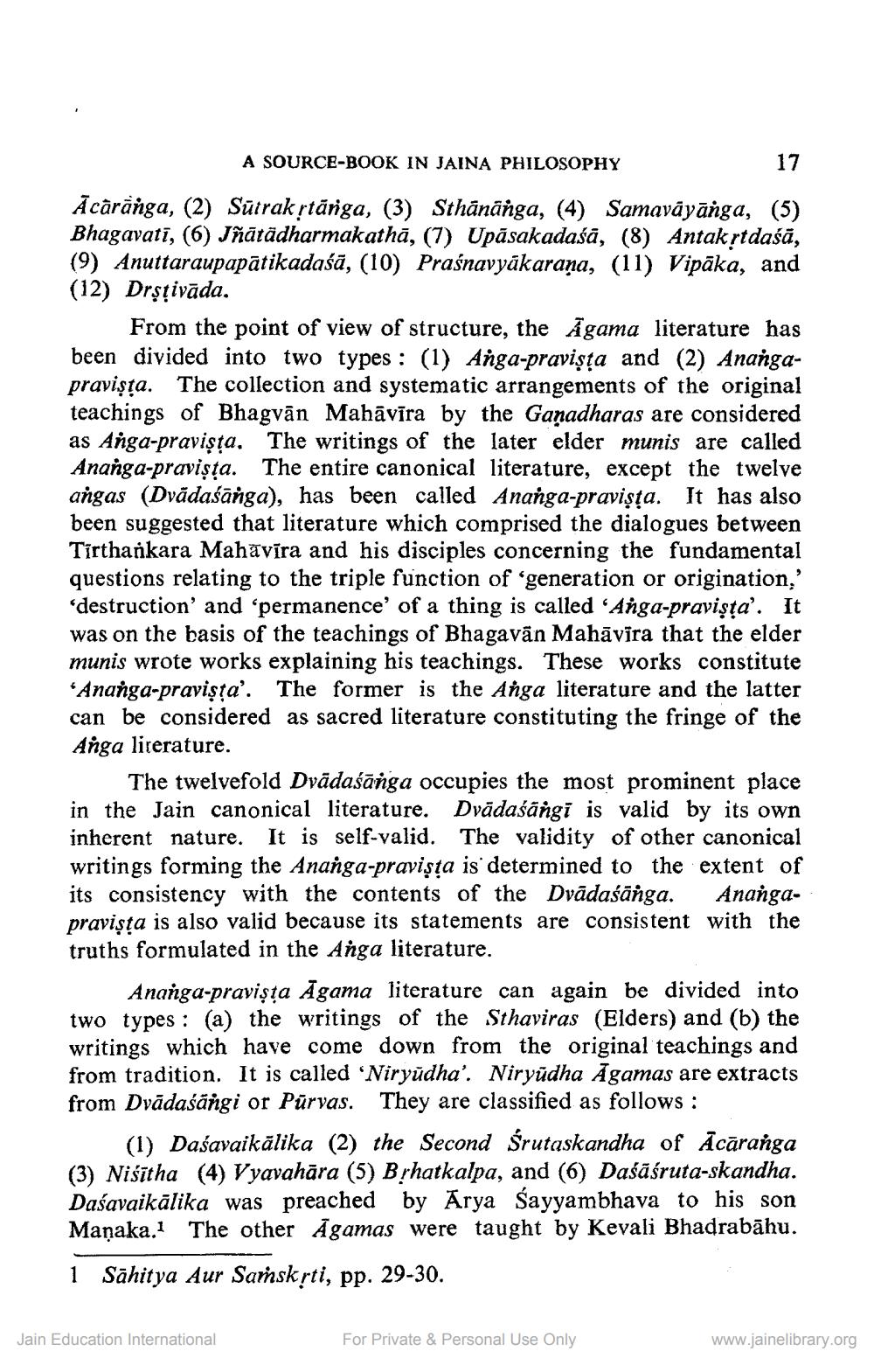________________
A SOURCE-BOOK IN JAINA PHILOSOPHY
17
Ācārānga, (2) Sūtrak rtārga, (3) Sthānānga, (4) Samavāyānga, (5) Bhagavatī, (6) Jñātādharmakathā, (7) Upāsakadaśā, (8) Antak rtdaśā, (9) Anuttaraupapātikadaśā, (10) Praśnavyākaraņa, (11) Vipāka, and (12) Drşțivāda.
From the point of view of structure, the Āgama literature has been divided into two types : (1) Anga-pravişğa and (2) Anangapravișța. The collection and systematic arrangements of the original teachings of Bhagvān Mahāvīra by the Ganadharas are considered as Anga-pravişta. The writings of the later elder munis are called Ananga-pravista. The entire canonical literature, except the twelve angas (Dvādaśanga), has been called Ananga-pravista. It has al been suggested that literature which comprised the dialogues between Tirthankara Mahāvīra and his disciples concerning the fundamental questions relating to the triple function of generation or origination,' 'destruction' and 'permanence' of a thing is called "Anga-pravişta'. It was on the basis of the teachings of Bhagavān Mahāvīra that the elder munis wrote works explaining his teachings. These works constitute
Ananga-pravişta'. The former is the Anga literature and the latter can be considered as sacred literature constituting the fringe of the Anga literature.
The twelvefold Dvādaśānga occupies the most prominent place in the Jain canonical literature. Dvādaśāngi is valid by its own inherent nature. It is self-valid. The validity of other canonical writings forming the Ananga-pravişta is determined to the extent of its consistency with the contents of the Dvādaśānga. Anangapravişta is also valid because its statements are consistent with the truths formulated in the Anga literature.
Ananga-pravişğa Āgama literature can again be divided into two types : (a) the writings of the Sthaviras (Elders) and (b) the writings which have come down from the original teachings and from tradition. It is called 'Niryūdha'. Niryūdha Āgamas are extracts from Dvādaśāngi or Pūrvas. They are classified as follows :
(1) Daśavaikālika (2) the Second Śrutaskandha of Ācāranga (3) Nisītha (4) Vyavahāra (5) Brhatkalpa, and (6) Daśāśruta-skandha. Daśavaikālika was preached by Arya Sayyambhava to his son Manaka. The other Āgamas were taught by Kevali Bhadrabāhu. 1 Sähitya Aur Samskrti, pp. 29-30.
Jain Education International
For Private & Personal Use Only
www.jainelibrary.org




